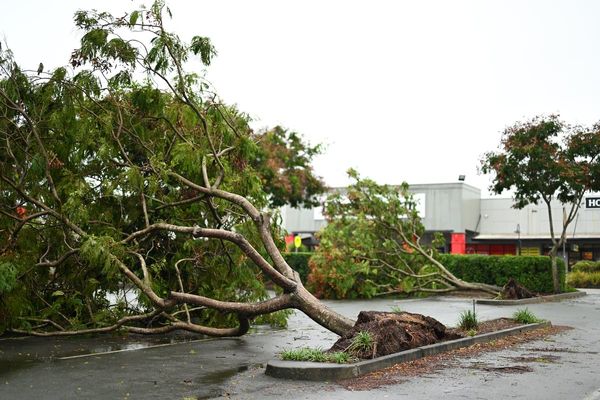Indonesia produced nearly four times the amount of nickel in recent years compared to a decade earlier — following the global push for a low-carbon revolution that drives the mining for the mineral essential for electric vehicles, renewable energy technologies, and stainless-steel production.
This boom, however, takes a toll on nickel-rich regions like Sulawesi, threatening a one-of-a-kind biodiversity hotspot, known as ‘Wallacea’.
Our recent study raises questions about the sustainability of nickel mining practices as we highlight its environmental and social impacts in Sulawesi, based on data from 7,721 villages.
Sulawesi’s forests and biodiversity at risk
Our study shows that between 2011 and 2018, villages near nickel mines experienced deforestation at nearly double the rate of non-mining areas. The loss is attributable to land acquisition needed to mine the mineral.
Deforestation will not only worsen global warming but also destroy habitats and threaten wildlife populations. Among the species potentially affected are Sulawesi’s 17 primate species, such as Celebes crested macaque and Peleng tarsier—all of them are endemic to the island. If this trend continues, it could set back efforts to both mitigate greenhouse gas emissions and conserve biodiversity.
The costs and benefits to local communities
Our research reveals that unsustainable nickel mining practices have increased the pollution and the frequency of mining-related disasters, such as landslides and flash floods. They directly impact local communities that rely on agriculture, fishing, and other natural resource-based livelihoods.
The effects of nickel mining, however, are nuanced. Environmental damage and land acquisition have triggered conflicts. But while social well-being declined in areas near nickel mines, the impact varied significantly across regions, and was positive in some areas.
This implies that communities across Sulawesi can experience both positive and negative impacts. In villages with high poverty levels, for example, the environmental and health impacts of mining have been particularly severe. In these villages, adverse health effects are more likely to occur due to limited resources and capacity to cope with pollution associated with mining activities.
However, our study also shows that these poorer regions have also gained the greatest benefits from mining, including improved infrastructure and living conditions. Revenue from mining has likely added to investments into public goods, such as improving water systems and transportation networks.
More information is needed to understand what is driving this variation, but it underscores the precarious balance posed by nickel mining. While it provides vital development opportunities, it also threatens vulnerable ecosystems and exposes communities to significant environmental and health risks. Achieving progress without deepening hardship remains a complex challenge for sustainable development in Indonesia and other nickel producing countries.
Towards sustainable nickel mining
Tackling these challenges requires a just and sustainable approach to nickel mining. If the harm continues, it could undermine efforts to conserve Sulawesi’s unique biodiversity. That’s why protecting its ecosystems is critical.
Several recommendations have been proposed by other academics and actors, three of which we emphasise through our mining evaluation:
1. Strengthening environmental and social standards
Governments and mining companies must follow strict environmental and social standards to minimise harm to ecosystems and communities. This includes strict regulations on deforestation and water management, along with protections for workers and affected communities.
For mining companies, frameworks like the OECD Due Diligence Guidelines can ensure that businesses carry out the necessary protocols to identify, prevent, and account for adverse impacts that result from their mining practices. At the same time, state actors should continue to fulfil their obligations to protect and respect the rights of those affected by mining.
2. Ensuring community participation
Local communities must be central to decision-making around mining projects. Inclusive consultation and consent processes can help mitigate harm and ensure that mining operations do not harm those who rely on the environment for their livelihoods.
Involving communities in decision-making helps mining companies build trust and share benefits. As one case study has shown in Sulawesi, engaging local populations in evaluating the nickel production process can lead to corrective actions. Community feedback can ensure that mining projects not only achieve compliance but also align with the aspirations and well-being of affected communities.
3. Establishing robust monitoring and accountability
Regular monitoring and evaluation of mining operations, from start to finish, is crucial — not just for nickel but other mining commodities too. Companies should be held accountable for environmental damage and social harm, while successful practices should be highlighted to serve as models for the industry. Independent oversight by NGOs and local groups can boost transparency, ensure accountability, and promote best practices.
Time is crucial. With the low-carbon transition speeding up, swift action is needed to prevent environmental and social harm worldwide.
By reforming nickel mining practices, Indonesia can play a vital role in building a just, sustainable, low-carbon future, and provide a model for other countries.
This is a chance to balance economic prosperity, environmental protection, and social equity — ensuring the green energy transition’s benefits outweigh its costs.
Michaela Guo Ying Lo received funding from the University of Kent Global Challenges Doctoral Centre.
Jatna is also a member of Indonesian Academy of Sciences (AIPI) and lecturer in University of Indonesia
Matthew Struebig received funding from Natural Environment Research Council UK and Leverhulme Trust UK.
This article was originally published on The Conversation. Read the original article.







